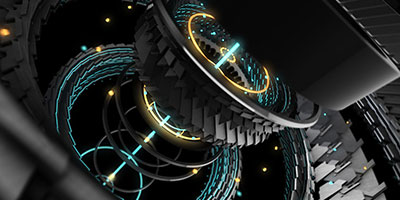 The combination of machine vision technologies and the approaches to designing an automation system are seemingly endless. Devices are more flexible and versatile than ever. But to create an efficient system that manufacturers can rely on, it’s best to follow some proven best practices. But first, let’s discuss what machine vision is and why your facility could benefit from using it.
The combination of machine vision technologies and the approaches to designing an automation system are seemingly endless. Devices are more flexible and versatile than ever. But to create an efficient system that manufacturers can rely on, it’s best to follow some proven best practices. But first, let’s discuss what machine vision is and why your facility could benefit from using it.
Machine Vision Helps Manufacturers Improve Process Efficiency
Many of today’s automation systems rely on precision and timing to produce end products. Inspection is often a manual process that requires a lot of training and human labor. But machine vision is revolutionizing the production line. Machine vision systems use digital sensors and programming inside industrial cameras to capture images to automate processes.
After images are captured, computer hardware and software process and analyze the images to make decisions. These decisions can range from inspection pass and fail to measuring components and guiding assembly to sorting products. Machine vision can boost efficiency and perform tasks hundreds of times faster than humans.
Although machine vision and automation systems have come down in price in recent years, they still require a significant investment from manufacturers. With thin margins and increased customer expectations, they need the best ROI possible when it comes to machine vision integration.
10 Essential Machine Vision Design Best Practices
If you use these best practices when designing your machine vision system, you’ll end up with an automation system that performs a peak efficiency right from the start.
1. Build the right team. Designing and implementing a machine vision system is going to take a coordinated effort.
2. Map out the system’s goals. Take note of production goals as well as any other capabilities you’d like your machine vision system to have.
3. Select the right cameras. You need a camera that captures the necessary data at a fast enough frame rate in your production environment to make the system work.
4. Identify the correct lens type. Find a lens that will provide a clear image and stand up to the conditions on your production line.
5. Choose the proper lighting. Without good lighting, the images your camera captures will be useless.
6. Pick the right software package. You want a package that is easy to use but also allows for flexibility in case your processes change in the future.
7. Calibrate the system. Failure to properly calibrate the machine vision system will result in wasted efficiency gains.
8. Test the system thoroughly. Tolerances or changing conditions might impact your machine vision system. Try to throw all scenarios at your system and make sure it passes.
9. Create the appropriate interface. Your machine vision interface should be easy for operators to learn and use but also give them the control they need.
10. Design a maintenance plan. Like any other equipment in a production facility, your machine vision system will need to be properly maintained.
Are you designing a new automation process for your production facility? Get the right machine vision camera from the experts at Phase 1 Technology Corp.
